A true friend to region’s threatened species
Dr Tony Friend, as part of working with some of Australia’s rarest wildlife, has the joy of holding and making eye contact with numbats. At an early age, Tony discovered his mind was wired to maths and science, which led him to specialise in the recovery of threatened mammals.
Gondwana Link is delighted to share insights into Tony’s immense experience and knowledge and to highlight his major contributions to wildlife conservation.
Gondwana Link: What shaped your early life and how did your passion for science develop?
Tony Friend: My father gained his doctorate in chemistry at Cambridge University, so perhaps it’s not surprising that throughout my schooling I was strong in chemistry, physics and maths.

I was born in Melbourne, lived in Sydney for a year and when I was three my father took a job as a senior lecturer in chemistry at the University of Tasmania. Our family moved to Hobart and I was sent to a Quaker school, just around the corner from our home. It turned out to be a fabulous, fabulous school. I loved it.

At age 14, my life took a pretty dramatic turn when my father was appointed Professor of Chemistry at the University of the West Indies in Trinidad. I lived there for three years with my parents and my two younger siblings. I’ll never forget the fun-loving Trinidadians or the incredible Carnival that takes over the island for a week each year.
After finishing school in Trinidad, through the Cambridge General Certificate of Education system, I moved back to Tasmania to start university. In 1970, I began my science degree in ‒ you guessed it ‒ chemistry, physics and maths.
I also studied geology because the University had a good geology school and I wanted a degree that would enable me to work in the field. I really enjoyed the subject, but I also really enjoyed college life, so I didn’t do so well in my first year. In my second year, I had to make up ground by picking up other subjects, and one I chose was biology. I absolutely fell in love with it and changed my course to take in botany and zoology. My focus was always on fieldwork and ecology, rather than laboratory studies.
I continued on this course through Honours and a doctorate, working on the ecology of leaf litter decomposition in forests. My particular focus was a group of small crustaceans called amphipods, which are abundant in the leaf litter of Tasmanian forests.
As well as researching their ecology, I became deeply involved in their taxonomy (the classification of organisms) and ended up describing 17 new species of amphipod from Tasmania. But I had kind of worked myself into a corner then because there weren’t a lot of career possibilities for taxonomists.
For about eight months in 1980, I worked at the Australian Museum in Sydney as an assistant curator in the Marine Invertebrates Section, which included amphipods. This was a ‘visiting’ position to bring in experts to work on the museum’s collections.
While I was at the Museum, I saw an advertisement in The Australian newspaper for a research officer position in WA at the Department of Fisheries and Wildlife. I got the job, which felt amazing because the position was hotly contested. I handed in my doctoral thesis, which consisted of two massive books, on a Friday and started work at the WA Wildlife Research Centre in Perth on the Monday. I was 29.
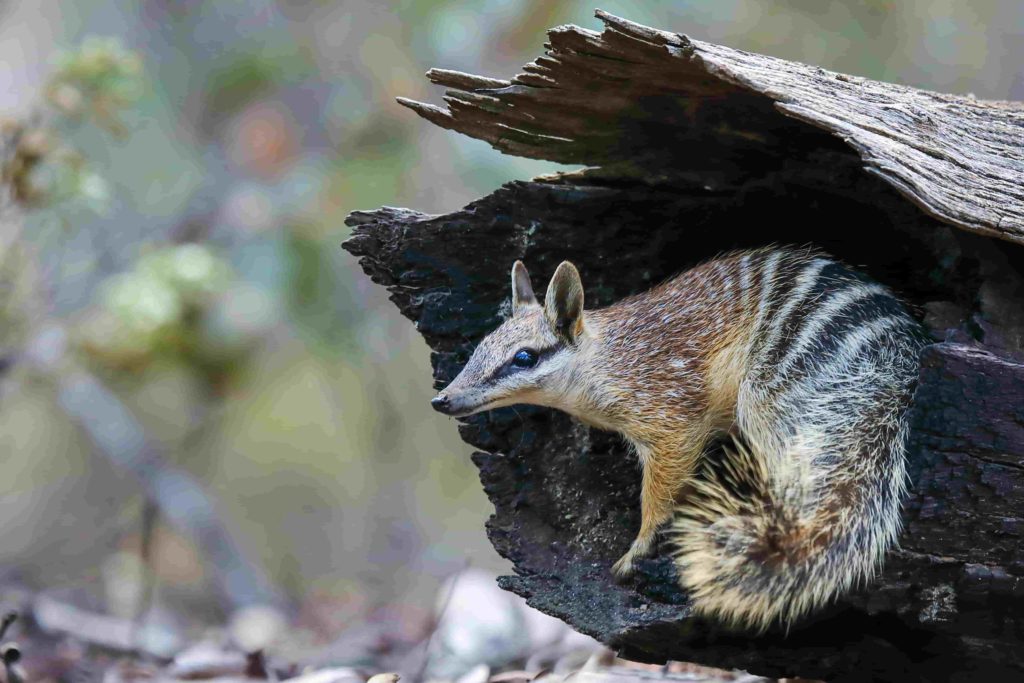
GL: Was this your dream job?
TF: Initially I felt daunted and a little terrified, but it came to be my dream job. The work was about the conservation of the numbat, pure and simple. My job was to find out more about them and, because they had recently become very rare, to work out what was needed to stop them from going extinct. At their lowest point, there were just two populations, in Dryandra Woodland near Narrogin and Perup forest near Manjimup, and probably no more than 300 individuals.
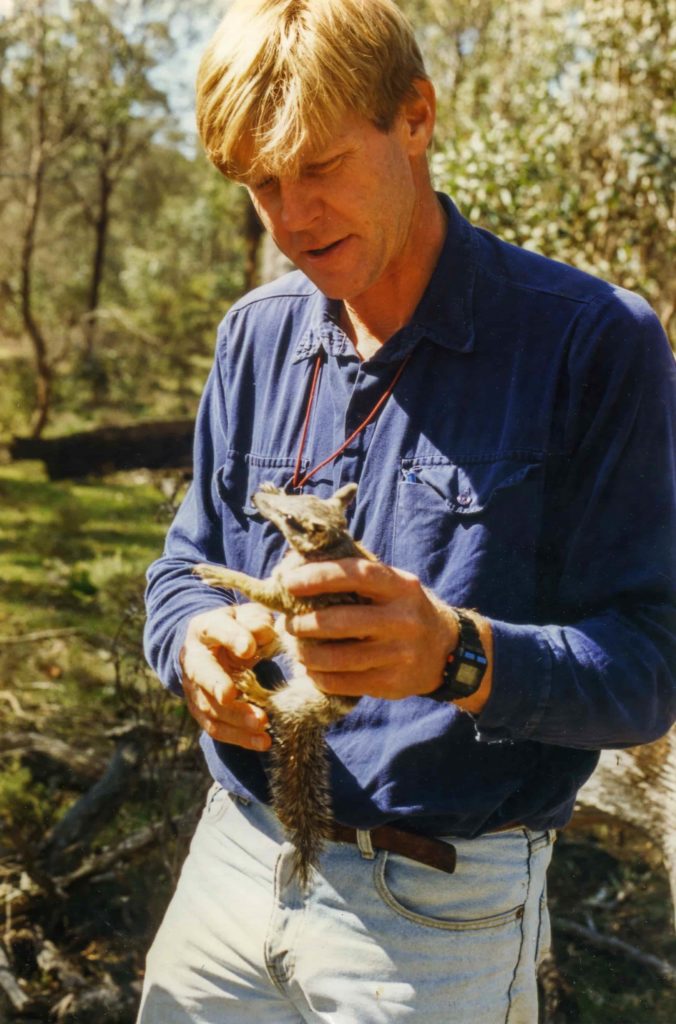
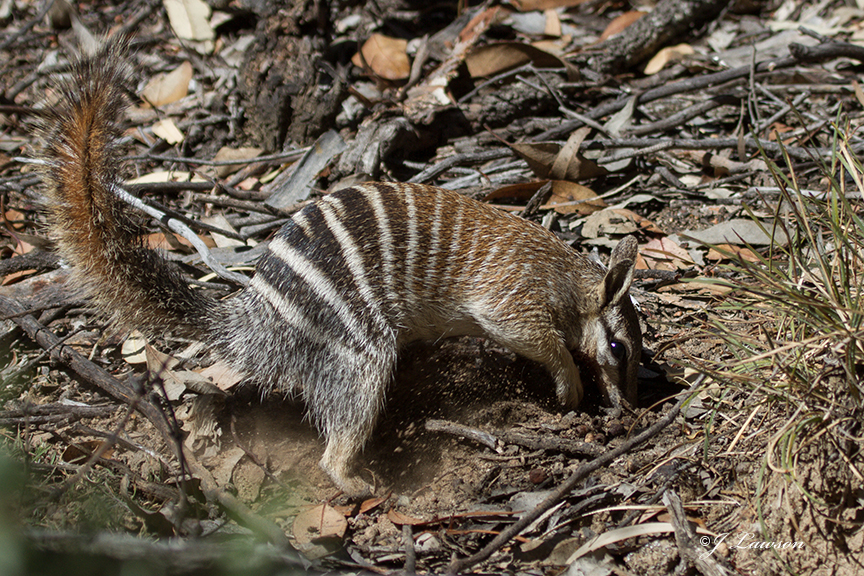
Numbats have a specialised diet of just termites and in the first three years of my work, I was able to establish the fact that numbats were not starving to death – there was still plenty of food for them. That wrote off fire as the problem to some degree, and even the impact of dry summers. So I turned my focus to predation by foxes.
There were two main competing theories about what was causing their numbers to plummet (in addition to earlier habitat loss): too much fire and on the other hand, predation by foxes. Climate change was also being thrown around a bit as a cause. Professor Bert Main said we weren’t getting the summer rainstorms that we used to have, which could be affecting their food supply.
In those early days of my numbat work, fox numbers were not being controlled. There were half a dozen or so marsupials (mammals with pouches for raising their young) that were once widespread across Australia but were just holding on in the south-west of WA. The fact that some were still there may have been partly because of the protective effect of the native Gastrolobium plants that were only toxic to non-native animals, like foxes. These plants contain the same chemical – fluoroacetate – as the synthetically produced 1080 poison. There’s a lot of Gastrolobium in Dryandra Woodland and other bush remnants around there, so I think it’s likely that these plants were instrumental in those marsupials hanging on. According to this theory, foxes would be poisoned by preying on animals that had fed on Gastrolobium plants, especially their new leaves, flowers and seeds. But it was clear to me that this protection wasn’t enough ‒ numbats were declining.
My departmental colleague Dr Jack Kinnear had begun looking at the effect of fox control on black-flanked rock-wallaby colonies on several granite rocks in the wheatbelt south of Kellerberrin. In 1982, I set up an experiment in Dryandra Woodland, baiting about 15 percent of the main numbat area and leaving the rest unbaited. My study showed that removing foxes by 1080 baiting for just three years caused a huge increase in numbat numbers. Jack’s rock-wallaby experiment had also produced spectacular results, and in 1989, our Department of Conservation and Land Management staff started operational fox baiting in Dryandra Woodland, and in nearby Boyagin and Tutanning Nature Reserves. More studies were carried out in the jarrah forest, Fitzgerald River National Park and other sites, and in 1996, the massive Western Shield predator control and wildlife reintroduction program was rolled out.
We weren’t really focused on cats in those days. We realised that cats weren’t good for wildlife – when you looked at the WA Museum records for the red-tailed phascogale, for instance, about half of the specimens had been brought in by somebody’s cat. However, I still believe that foxes may be even more of a threat to wildlife than cats because their very acute sense of smell allows them to track down and find their prey, whereas cats hunt predominantly by sight.
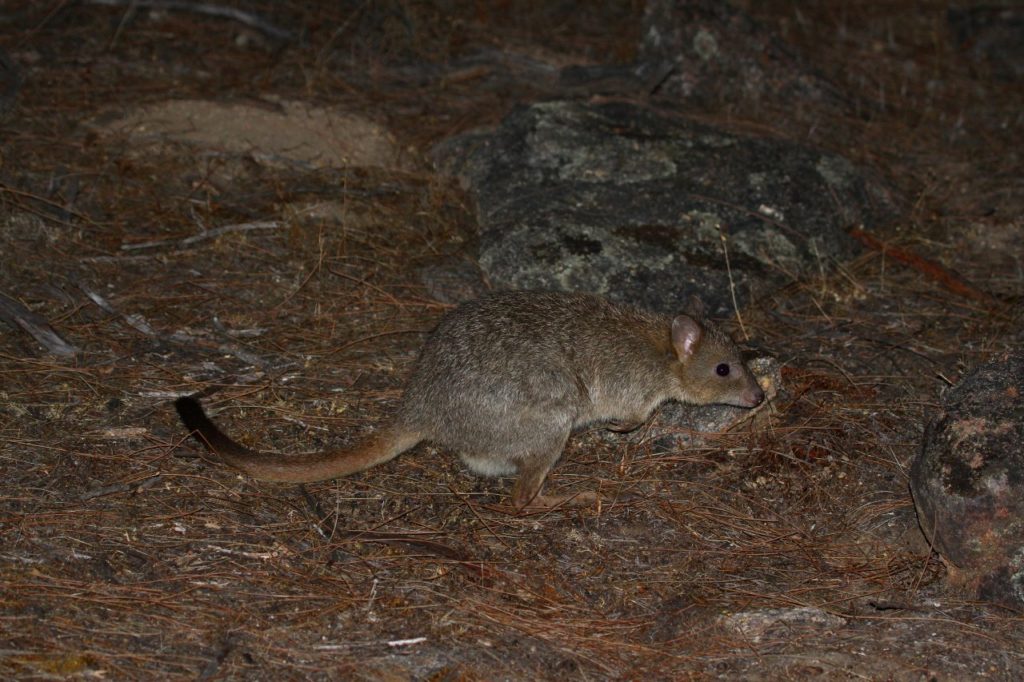
In the mid-1990s, however, the Dryandra populations of numbats and woylies, booming due to fox control, began to crash. Once we had largely removed foxes from Dryandra Woodland by the very efficient method of 1080 baiting, cats had benefited; they’d increased in number and stepped into the role of the fox in terms of hitting those medium-sized mammals, birds and other wildlife. Using new techniques that can identify predator DNA from prey remains and radio-collars, my colleague Dr Nicky Marlow studied predation in woylies and I did the same in numbats. We showed that for each species, feral cats had become the major predator. Fortunately, the Eradicat® bait, developed specifically to target cats, was in the final stages of approval for use in WA. In 2015 it was introduced to Dryandra’s baiting program and efforts were made, supported by the Peel-Harvey Catchment Council, to encourage adjoining landholders to trap and shoot cats on their properties. From 2015 until now, only one radio-collared numbat has been taken by a cat.
I think the numbat and woylie work at Dryandra has been instrumental in showing that we can actually achieve wildlife recovery if we successfully control foxes and cats. Dryandra’s mammal populations are booming now, even with no fences in place to keep out feral predators.
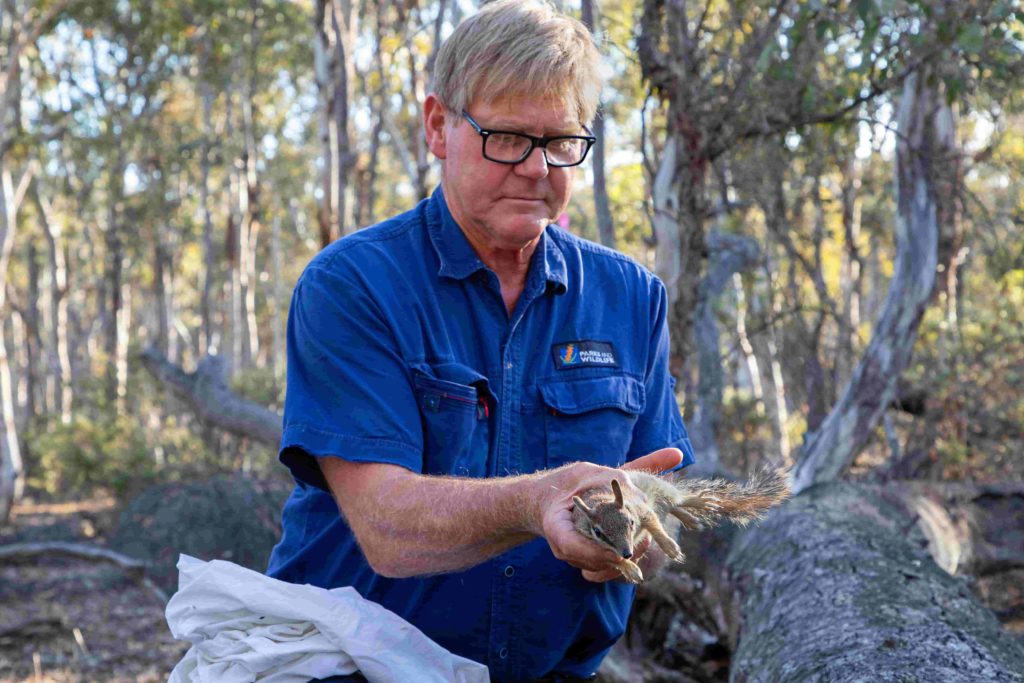
GL: In late 1982, you briefly headed back to Tasmania to be part of the Tasmanian Wilderness Society’s blockade to help save the Franklin River. What inspired you?
TF: In 1969, the year before I started university, I began bushwalking and it became my summer sport. I loved the bush, loved the southwest and was becoming a conservationist through wanting it to remain the way it was.
In 1971, some friends and I had gone into Lake Pedder before the dam waters started rising. That trip made such an impression on me. The weather was beautiful, the beach was white and shining. We climbed up Mount Anne and it was just a fabulous area. I think that was when I fell deeply in love with Tasmania’s south-west and mountaineering. So in 1976, when proposals emerged for more hydro dams in south-west Tasmania, including one that would flood the Franklin River, I got much more involved and joined the United Tasmania Group (UTG), which was the world’s first Greens Party. I painted my old ute with huge UTG logos for their election campaign. Dr Dick Jones, my botany lecturer, was one of the founders of the UTG, and he made a huge impression on me. I had never had much at all to do with politics before.
When the Tasmanian Wilderness Society’s Franklin River blockade commenced in December 1982, I told my Perth boss I was considering joining the blockade. He didn’t warn me against it!
Days after signing up, I was on the first boat after the Christmas break, heading from Strahan up the Gordon River to the protest camp. Three of us hiked overland to the dam site and camped. In the morning, we sat on a drill rig and were arrested for trespassing on Hydro-Electric Commission land. In joining this peaceful protest, my conscience was clear as the dam project was so destructive and unjustified. Together with another 1269 people who were arrested during the blockade, we helped send the message to Canberra that damming Tasmania’s last wild river was unacceptable.
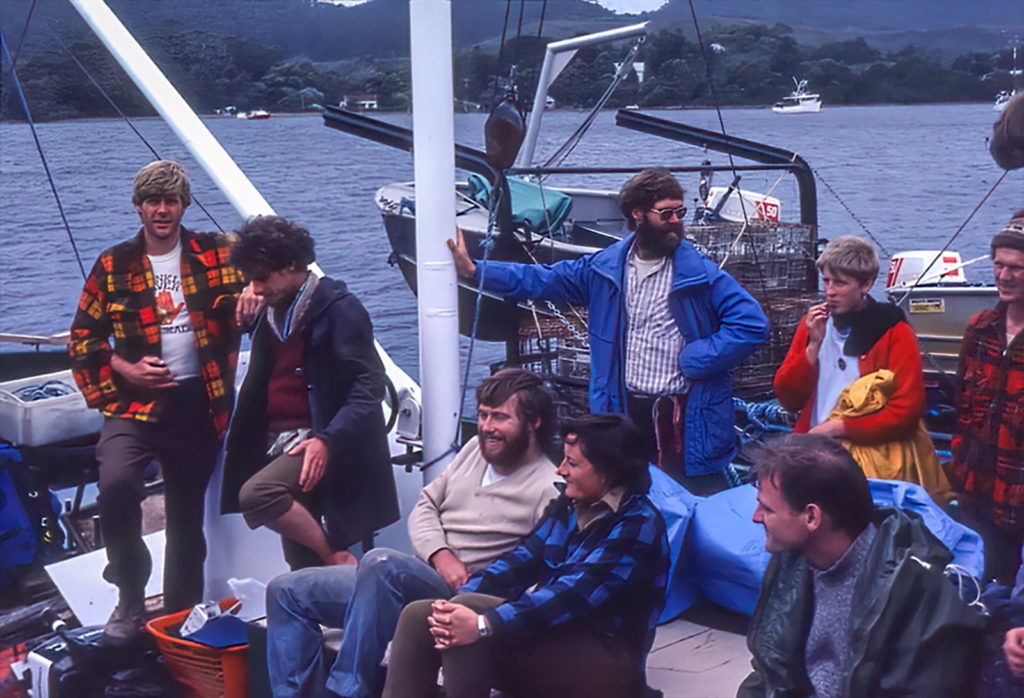
GL: With your Tasmanian background, it must have been a shock moving to WA because the vast wheatbelt was so heavily cleared.
TF: Yes, it was amazing. There was a Landsat satellite image that you could get hold of in those days, and I was stunned by the amount of clearing it showed. There were only tiny patches of bush left. Going into the wheatbelt and seeing these classic islands of habitat in a sea of wheat made me really appreciate them.
The wandoo at Dryandra has a big effect on me, every time I go there. You’re in this open woodland, the trees have lovely white stems and in the early morning and late afternoon, it all lights up. I love it, more and more.
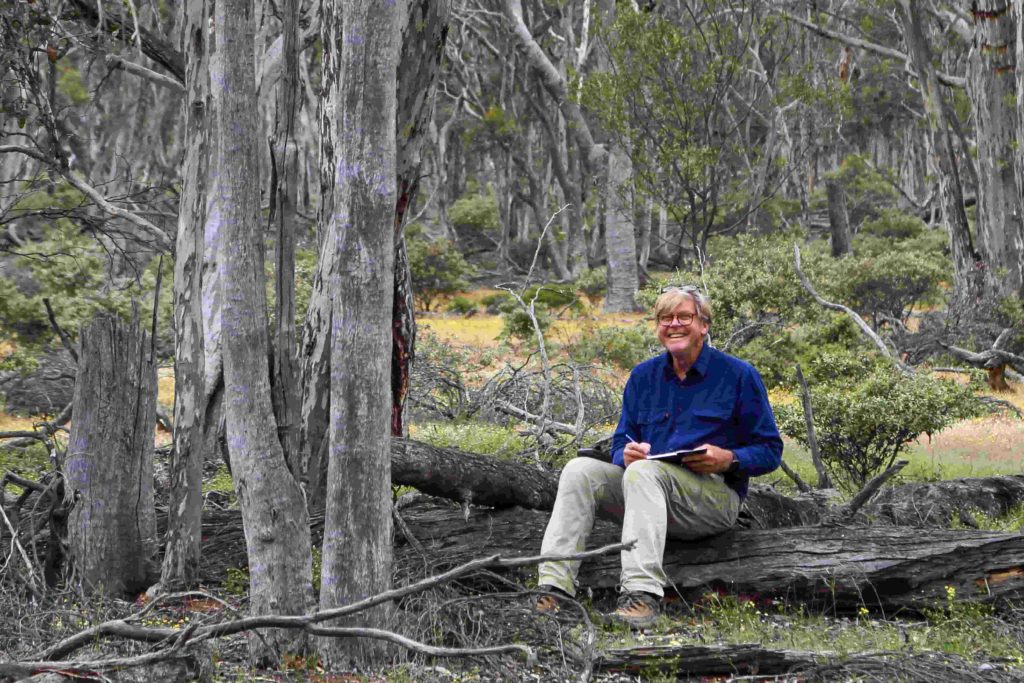
I remember being out in the bush at Dryandra at night, checking where numbats were sleeping, and in the stillness of the night, I could hear the sheep on adjacent farmland. I was right in the middle of Dryandra! It’s one of the biggest bush remnants in that part of the wheatbelt and has huge value for me, but that was a very sad reminder of how small it really is.
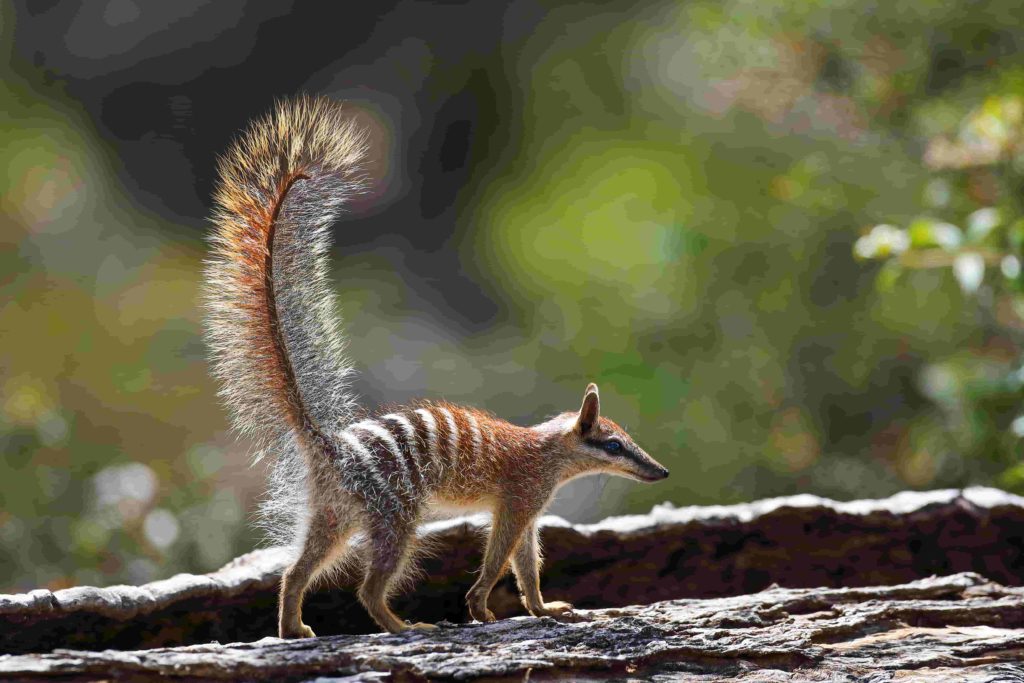
GL: What is it that you love about numbats?
TF: They are just spectacular. I don’t think anyone can look at a numbat and not be impressed by them, especially in comparison with the other Australian marsupials, which tend to be much less colourful. Here’s this animal with vivid colours – reddish brown with black and white stripes and a black stripe through the eye.
Although it seems hard to believe, I think their colour gives them camouflage. They are diurnal animals, which means they are active during the day, but in a dappled light, the numbat just disappears into the background.
Because I’d been focused on invertebrates during my time in Tasmania, when I started the WA job I was learning about being a mammalogist. I got to handle a numbat and that was probably one of the nicest things because they are so docile. Normally, when you handle nocturnal marsupials, which are active at night, you’ve got to keep them in a black bag and you just take out the bit of the animal that you want to measure, and leave the rest covered in the darkness. Numbats don’t care ‒ well, they don’t appear to care. You can hold them up in your hand and they just look at you. Mind you, their heart is going 100 miles an hour, so I don’t think they’re totally stress-free. But they’re so easy to handle ‒ as long as they know that they can’t get away. If you relax your grip, they’re gone and they’re very fast. I really enjoy those interactions with numbats.
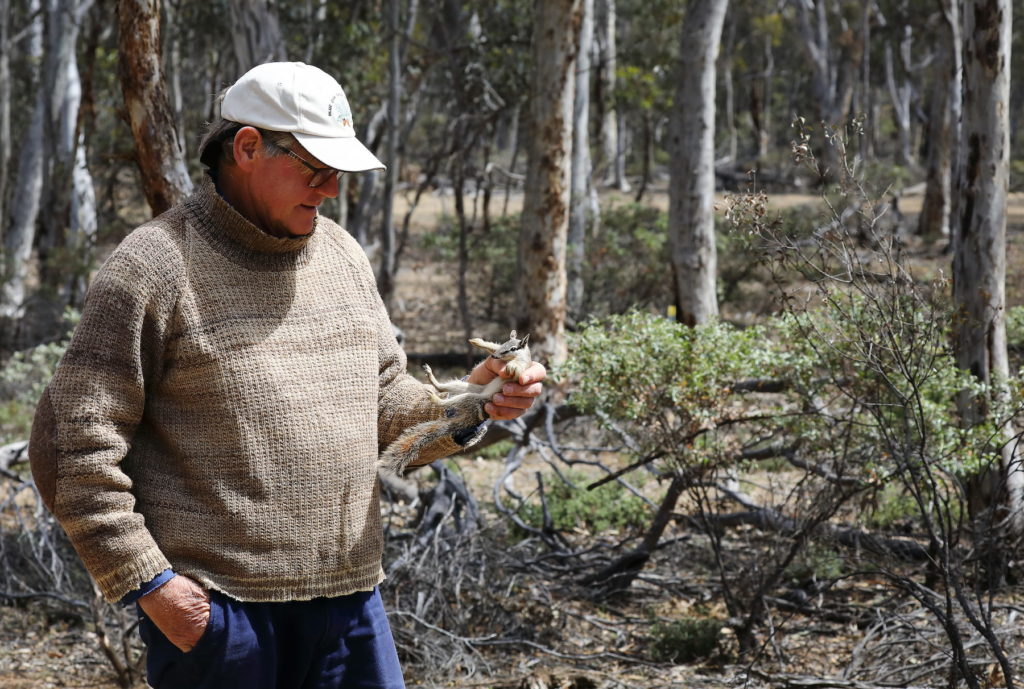
GL: How does the numbat’s diet of termites determine its lifestyle?
TF: Unlike most marsupials, numbats feed and move about during the day, following the cycle of termite activity that is governed by soil temperature. Nearly 30 species of termite are eaten by numbats in Dryandra Woodland. The termites are mostly extracted from the upper soil layers where they move through tiny tunnels to access the fallen wood and litter that they feed on.
Numbats don’t get out of bed until about two hours after sunrise when the soil has heated up enough for the termites to come up into their feeding galleries. They do turn over pieces of wood to get to termites underneath, but usually they’re digging little holes in the ground that penetrate the termite gallery and their long tongue goes in both ways and scoops up about 20 termites at a time.
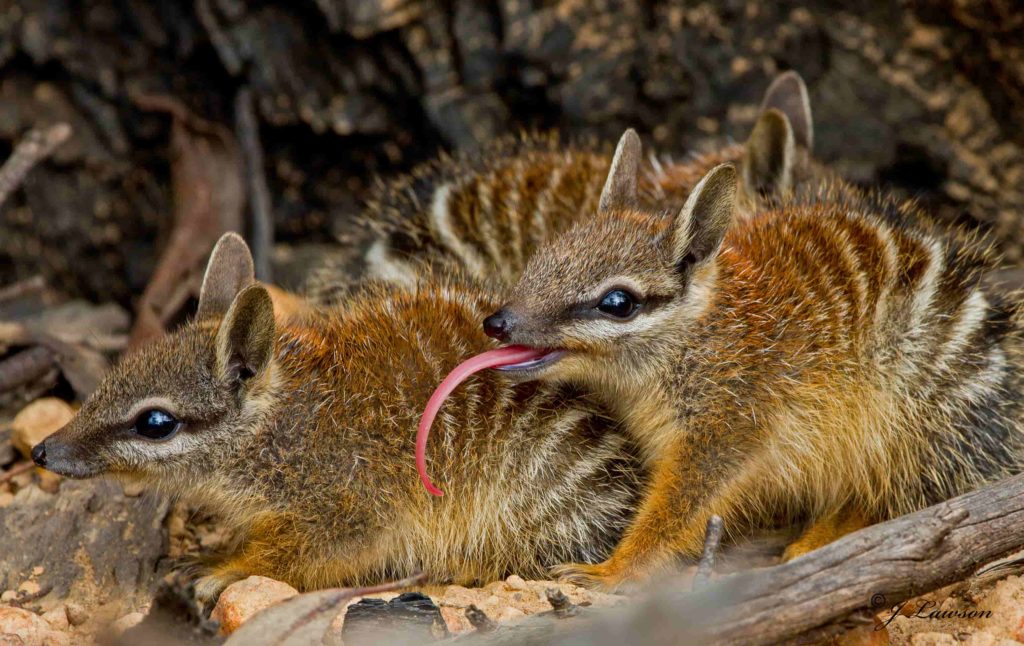
The presence of termites in these upper soil layers is greatly affected by temperature, and the temperature in the soil changes a lot during the day and during the year. Termites can’t abide the high soil temperatures of summer. So as the sun rises high in the sky on a summer’s day, the hotter the soil gets, and the termites go down deeper. Around midday in summer, when the soil is hot and the termites have moved deeper underground, the numbats give up trying to dig them up. They sit in a nice open log, or under a bush and wait until the day cools down and the termites come back up into their feeding galleries.
In winter, numbats dig for termites almost until sunset. Early and late on winter days and at night, termites need to keep their nest warm, so the worker termites go back to their nest and warm it with their metabolic heat. While they’re in their nest, they’re out of reach of numbats.
I spend a lot of time walking in the woodland and looking at the ground for numbat and other mammal diggings. That digging helps all sorts of processes in the ecosystem, like the wettability of soil and the creation of soil pits where seeds can accumulate and germinate, so these mammals are important ecological engineers.
GL: What other threatened marsupial species have you worked with?
TF: I have been extraordinarily fortunate to work on the recovery of the Shark Bay bandicoot, quenda, red-tailed phascogale, bilby, woylie, dibbler, quokka and Gilbert’s potoroo, among others.
The focus has been endangerment – the degree of threat, and the common factor has been predation by foxes and cats. There is also a background of small populations, isolated due to habitat fragmentation through clearing. In a lot of cases, the solutions involve fox and feral cat control. But they could also involve linking habitats through plantings or establishing populations in other areas, and then keeping those populations linked genetically to maintain the species’ vitality.
There are other threats too. With the dibbler, which lives in species-rich heathland such as Fitzgerald River National Park, Phytophthora dieback is a big threat because it wipes out its habitat. The pathogen removes the shrub layer so there’s no protective cover and the dibbler’s insect food is lost because there are no flowers.
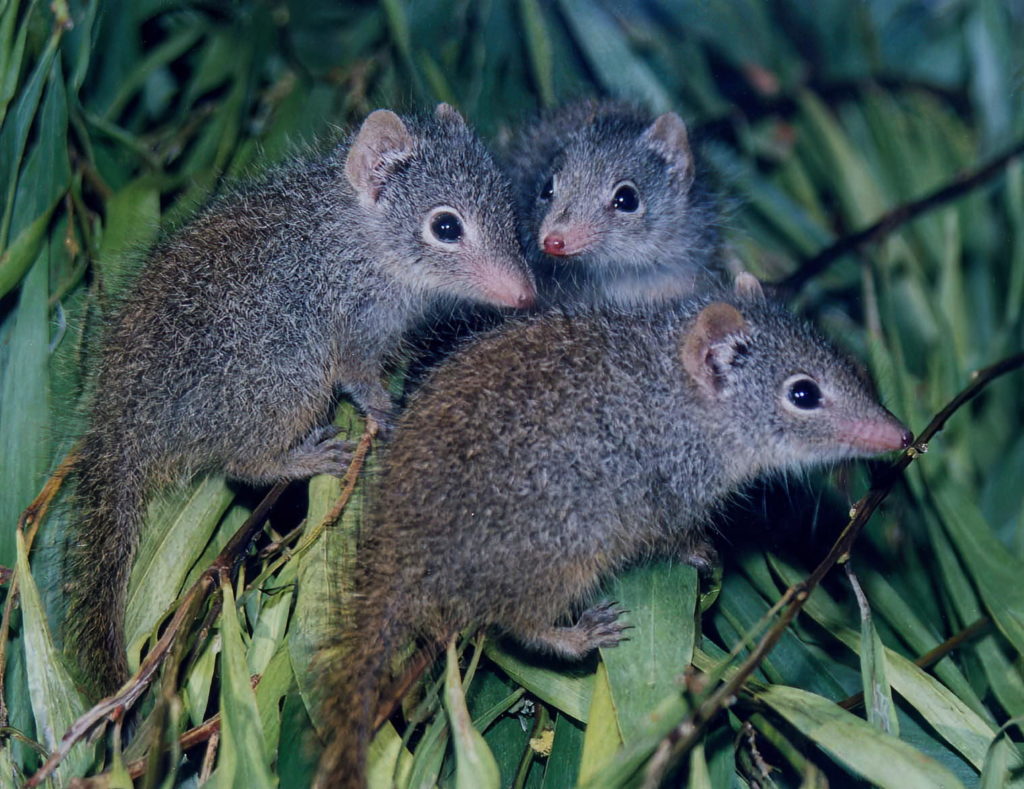
It was being asked by my boss to lead the recovery work on Gilbert’s potoroo in 1999 that prompted my move to Albany. The world’s only population, discovered at Two Peoples Bay in 1994, was tiny, with only around 30 animals.
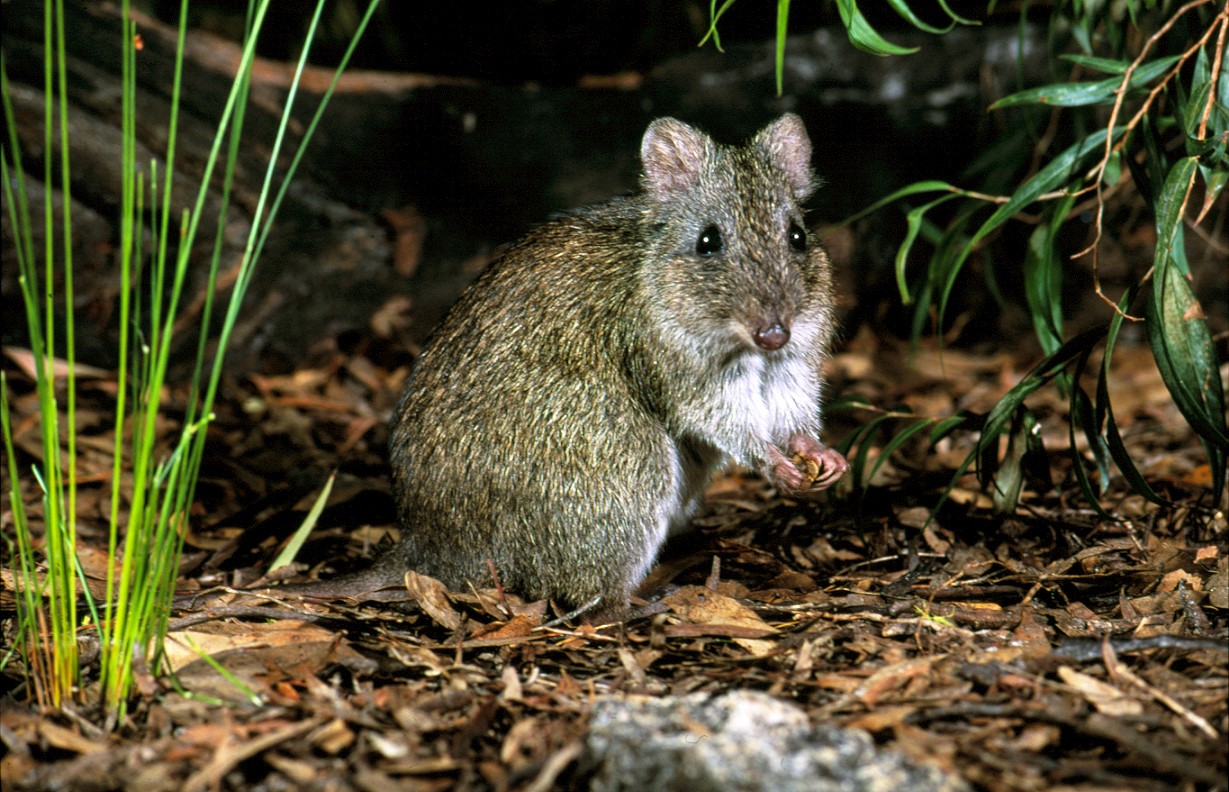
I inherited a major captive breeding effort, which wasn’t having great success. While testing various strategies to kickstart breeding, we tried translocating some from Two Peoples Bay to Bald Island, near Cheynes Beach, and they just went like a bomb. That population ended up being three times as large as the Two Peoples Bay population, so that was the biggest step forward. It was my great fortune to have such strong support from the potoroo team of Tim Button and Steph Hill.

With a substantial grant from State Treasury, the Department also built a predator-proof fenced enclosure along the coast from Two Peoples Bay in Waychinicup National Park and we set up another insurance population, which is now in a relatively healthy state at 25-30 potoroos. But then, in 2015, a major fire happened in Two Peoples Bay Nature Reserve. The area was left black and bare, with little skeletons of bushes. Only a few animals survived and it really affected me – it was devastating. The good news is that the burnt habitat has now recovered sufficiently to start introducing potoroos back into the reserve. We released animals from Bald Island and Waychinicup there in 2022 and 2023. They are surviving well and the future looks bright.

So much of my work with the Department of Biodiversity, Conservation and Attractions has been greatly assisted by individual volunteers and community groups, including the Numbat Task Force, Project Numbat and the Gilbert’s Potoroo Action Group. The people involved are immensely dedicated and I think – I hope – they get a lot out of the work too.
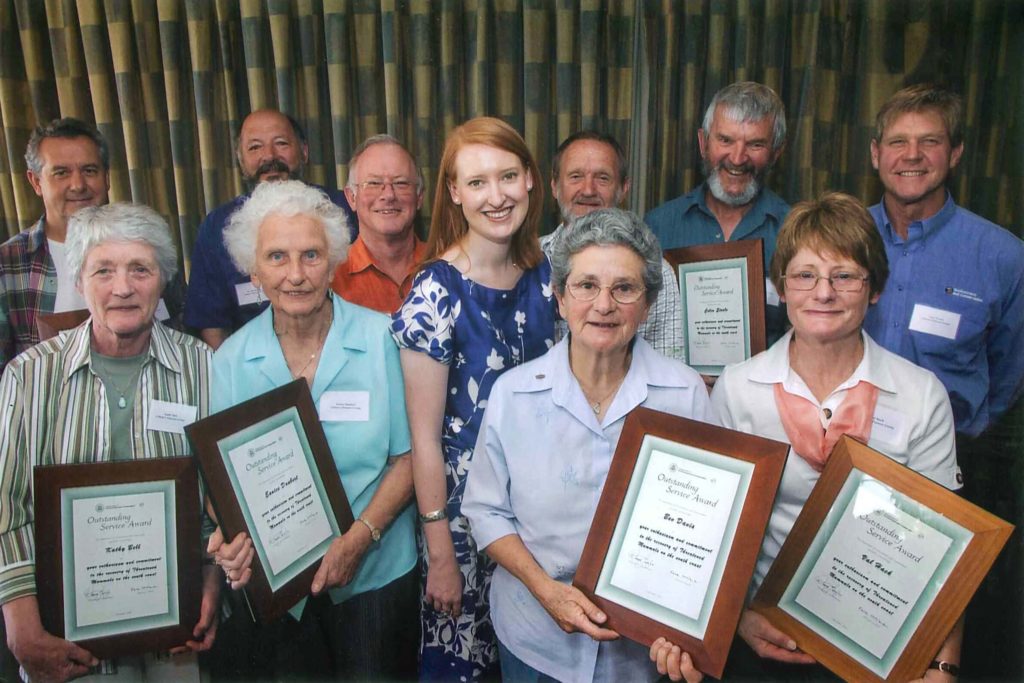
GL: After 42 years, you have retired from the Department’s fauna conservation programs. What key things have you learned about threatened fauna conservation that need to be carried into the future?
TF: I started as a scientist, doing an investigation into a particular problem, involving the numbat, and coming up with a solution. But I also became much more involved in the management side of threatened fauna recovery, including translocating species to new areas to establish other populations. This work involved science, including monitoring the animals to work out how well things were going, and fortunately I was able to stay close to the on-ground management.
Fauna conservation work has become more compartmentalised into ‘science’ and ‘management’, whereas I think the benefit of a dedicated role is that you can concentrate on the overall task and see it through ‒ adapting the management as you learn by doing. You’re not being called away to do fire control or something else. I have huge respect for the management officers – it’s a great credit to them that they can still get some fauna and flora recovery done as well as all their other diverse work.
I think it just comes down to passion. I think we need champions. I think we need people who will actually be the ones who are pushing all the time to get a thing done. We have species recovery teams, which are designed to co-ordinate all the efforts on that particular species, but I think there still has to be someone who has the time to devote to it.

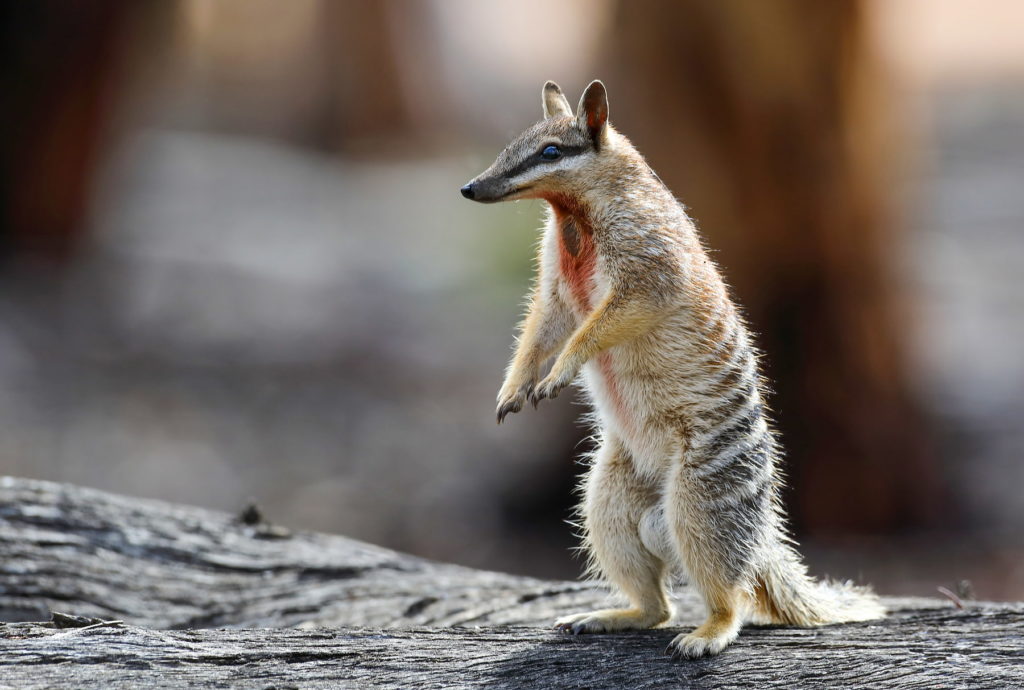
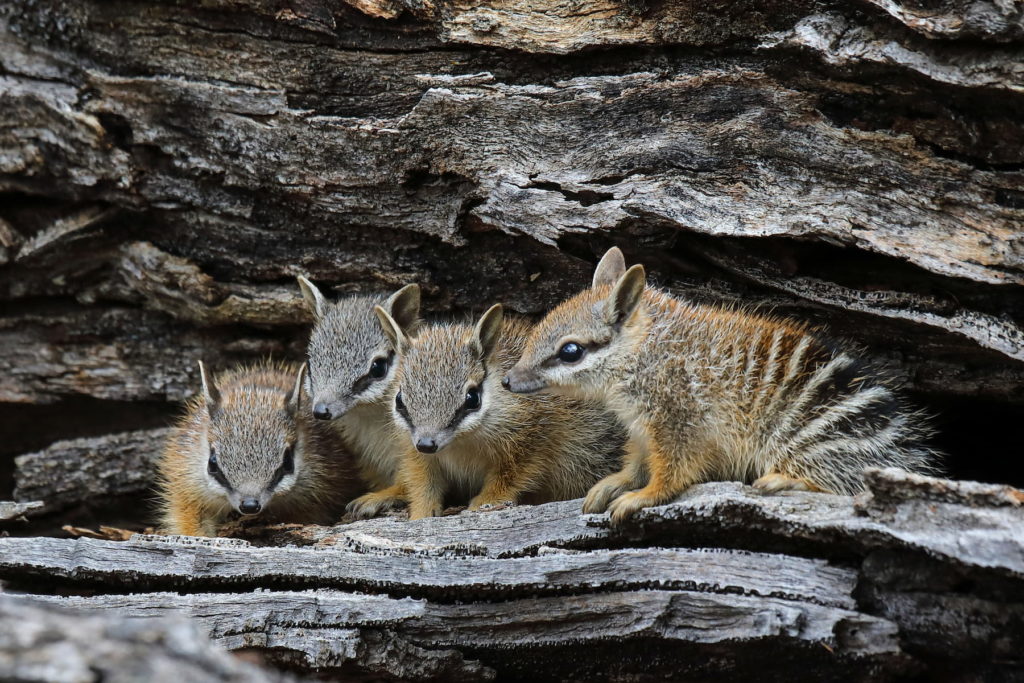
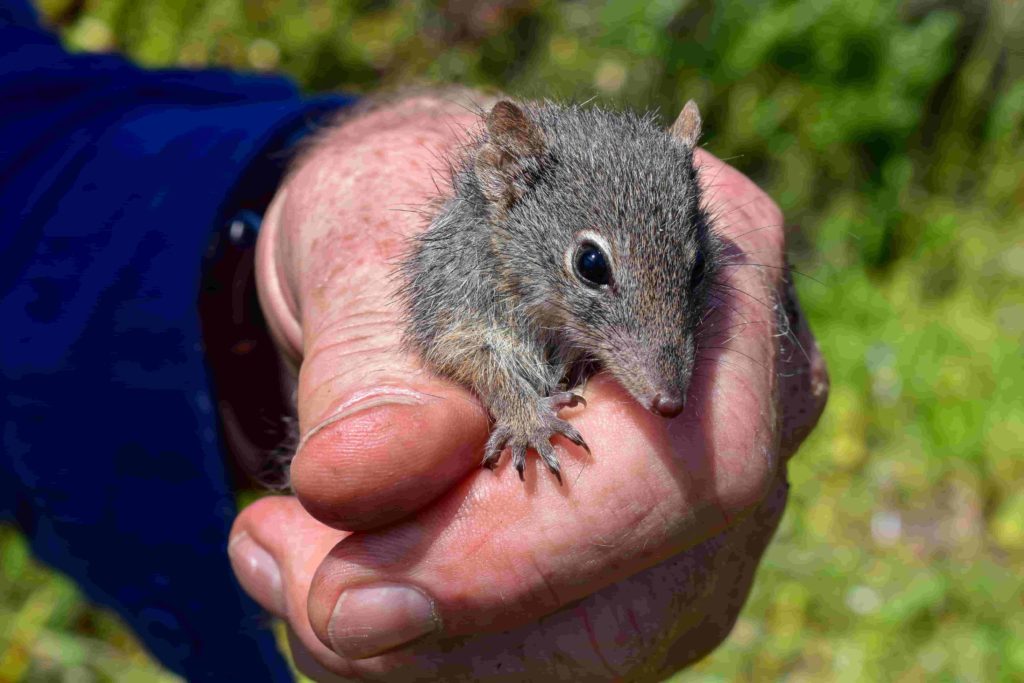
This story is largely focused on Wiilman and Menang country. We respect the deep knowledge Wiilman and Menang people have of their country and its wildlife.
Thanks to Dr Tony Friend and the photographers. Editing by Margaret Robertson, Tony Friend, Stephen Mattingley and Keith Bradby. Photo editing by Carol Duncan. This story is also published in the February 2024 edition of the Southerly Magazine.
FURTHER READING
- Visit the Project Numbat website for further information and imagery and ways to support the group’s activities in aid of numbats.
- Numbat Task Force has a Facebook page, which includes wonderful photos of numbats.
- Browse the Gilbert’s Potoroo Action Group website, which contains a helpful ‘Knowledge Base’ containing Recovery Plans, Action Plans, articles, publications and more. The site also provides opportunities for you to help the Gilbert’s potoroo.
